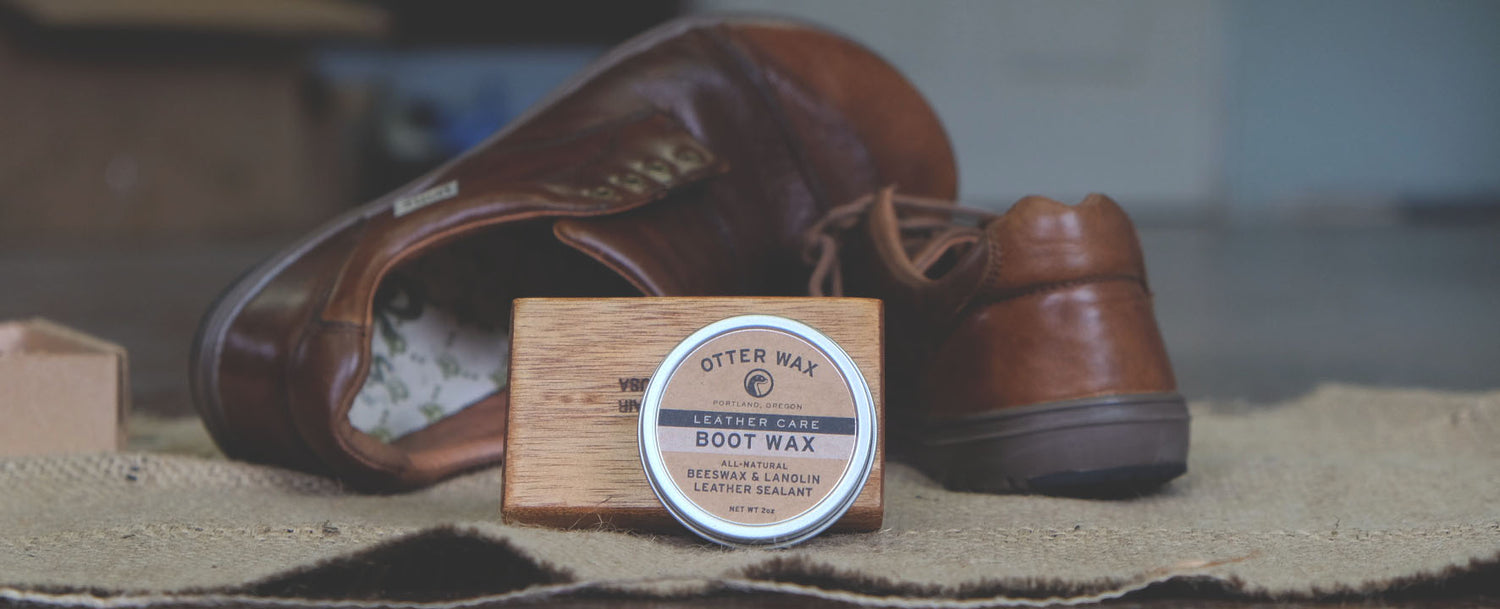Otter Wax’s all-natural products are formulated and hand-made in Portland, Oregon. They do not use any animal fats, fillers, petroleum distillates, mineral oil, or chemical preservatives. Otter Wax uses natural ingredients that come from sustainably harvested sources and offer the least amount of environmental impact. Otter Wax products are made from natural plant-based ingredients and humanely-harvested beeswax and lanolin without sacrificing effectiveness.
Having a clean surface when waxing an unwaxed fabric is very important because anything that isn't removed will get permanently sealed in under the layer of wax when applied.
Saddle Soap
The Saddle soap should be used first as it helps clean leather and remove stains. It is the toughest of the four substances so don’t hesitate to use a little water to soften it up and rub onto a towel.

Leather Salve
The Leather Salve helps restore softness to the leather and eliminates cracking. These two characteristics are especially good in the colder months when your shoes are more apt to dry out.
With all of the substances, use a rag to spread the Salve evenly across the shoe. Work into the leather in a circular motion until the substance is no longer visible.

Leather Oil
Use the oil sparingly as a lot goes a long way. The oil is the main component when it comes to polishing and shiner the shoe for a new and revived look.

Boot Wax
The last application should be the Boot Wax. Boot Wax is used to protect the shoe from outside elements as well as give it a waterproof seal.
Horsehair Brush
After applying each substance, using a rag or better yet, a horse-haired brush to help the substances work into the shoe. Before applying a new substance, be sure the shoe is dry and the previous application is finished.
For more information on Otter Wax please visit here.


